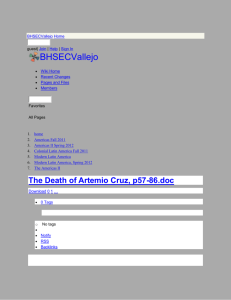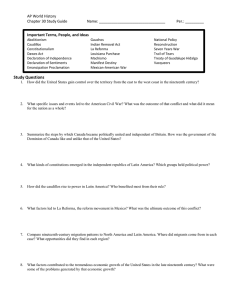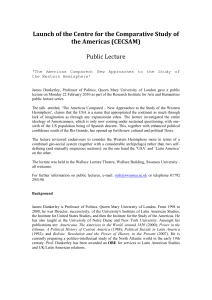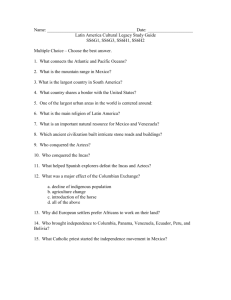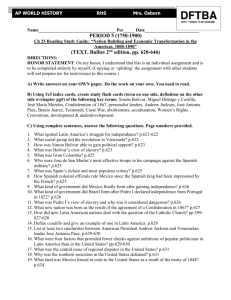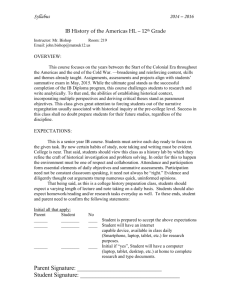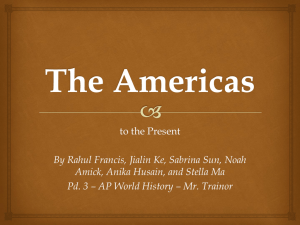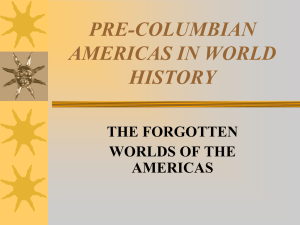Ch. 23 Study Guide
advertisement
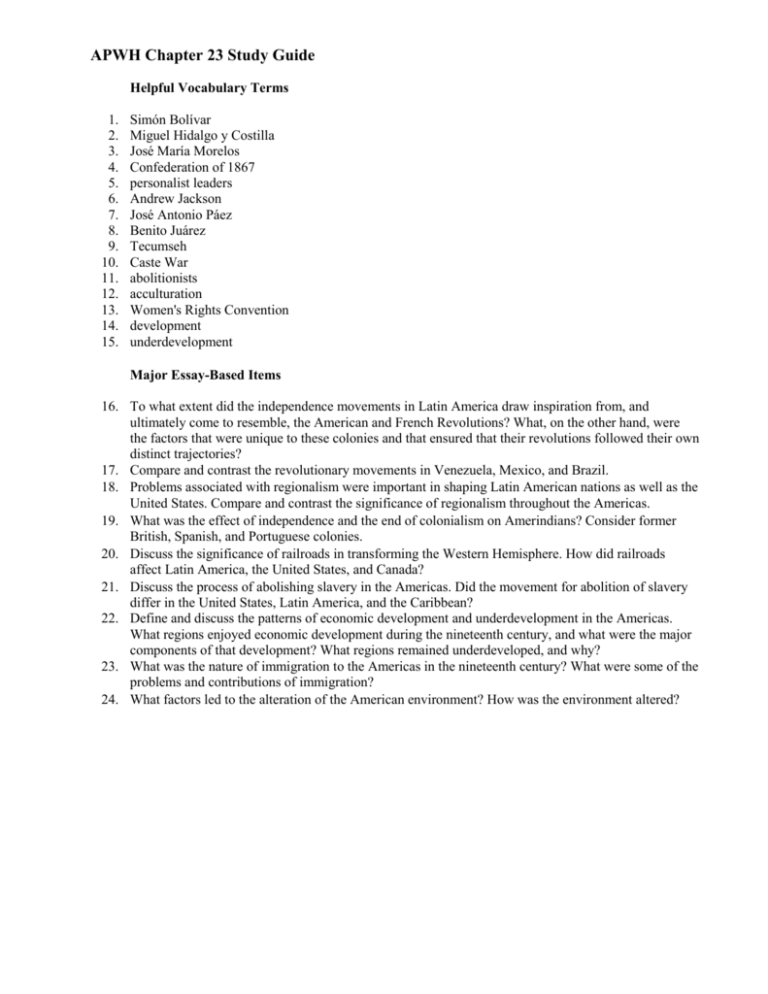
APWH Chapter 23 Study Guide Helpful Vocabulary Terms 1. 2. 3. 4. 5. 6. 7. 8. 9. 10. 11. 12. 13. 14. 15. Simón Bolívar Miguel Hidalgo y Costilla José María Morelos Confederation of 1867 personalist leaders Andrew Jackson José Antonio Páez Benito Juárez Tecumseh Caste War abolitionists acculturation Women's Rights Convention development underdevelopment Major Essay-Based Items 16. To what extent did the independence movements in Latin America draw inspiration from, and ultimately come to resemble, the American and French Revolutions? What, on the other hand, were the factors that were unique to these colonies and that ensured that their revolutions followed their own distinct trajectories? 17. Compare and contrast the revolutionary movements in Venezuela, Mexico, and Brazil. 18. Problems associated with regionalism were important in shaping Latin American nations as well as the United States. Compare and contrast the significance of regionalism throughout the Americas. 19. What was the effect of independence and the end of colonialism on Amerindians? Consider former British, Spanish, and Portuguese colonies. 20. Discuss the significance of railroads in transforming the Western Hemisphere. How did railroads affect Latin America, the United States, and Canada? 21. Discuss the process of abolishing slavery in the Americas. Did the movement for abolition of slavery differ in the United States, Latin America, and the Caribbean? 22. Define and discuss the patterns of economic development and underdevelopment in the Americas. What regions enjoyed economic development during the nineteenth century, and what were the major components of that development? What regions remained underdeveloped, and why? 23. What was the nature of immigration to the Americas in the nineteenth century? What were some of the problems and contributions of immigration? 24. What factors led to the alteration of the American environment? How was the environment altered? Map-Based Items 1. Using Map 24.1, identify the new countries that emerged by 1840. In addition, locate the territories still under the control of colonial powers in 1840. 2. Using Map 24.1, locate the areas of the United States that belonged to Mexico, and explain how this situation changed after 1848. Compare with Map 24.3 and discuss how this change fueled the U.S. motivation for westward expansion. 3. Using Map 24.2, discuss the Confederation of 1867 and how the borders of Canada were changed as a result. 4. Refer to Maps 24.2 and 24.3 and discuss the effects of railroad building in North America. How did this promote expansion? 5. Refer to Map 24.3 and identify the largest territorial expansions during the period from 1800 to 1850. What made this expansion possible? 6. Refer to Map 24.3 and show the European and American nations that were expelled from North America by the United States. How was this expulsion accomplished? 7. Refer to Map 24.3 and list the issues that arose as a result of territorial expansion. 8. Refer to Map 24.4 and explain why railroad growth increased so much at the end of the nineteenth century and the start of the twentieth century. Why does it seem so concentrated in the middle of the country?
